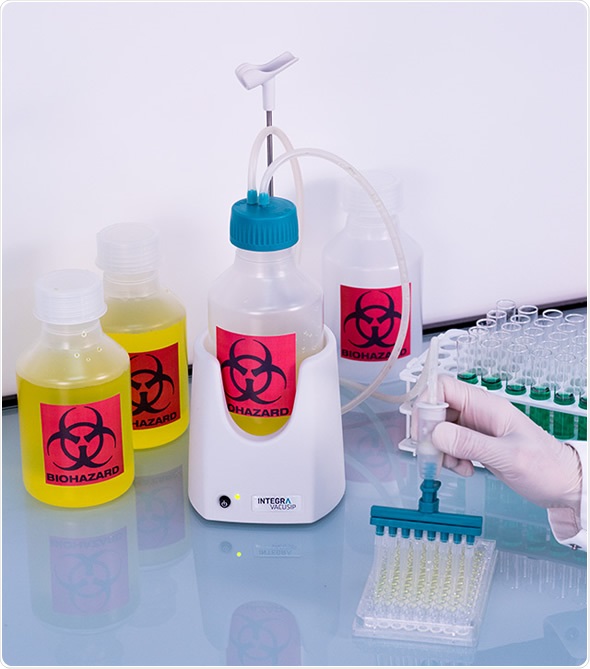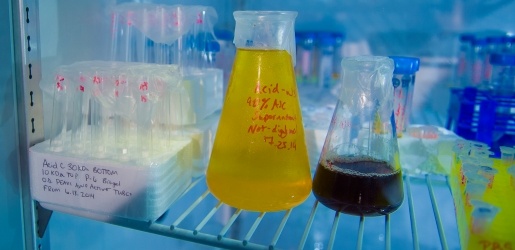Industrial Wastewater Treatment: Custom-made Solutions for Complicated Wastewater Difficulties
Wiki Article
Exactly How Fluid Garbage Disposal Works: An In-depth Introduction of Methods and Technologies Employed

Introduction of Fluid Waste Types
The complexity of liquid waste kinds necessitates a complete understanding of their qualities and effects for disposal. Liquid waste can generally be classified into numerous types, including commercial, local, agricultural, and unsafe waste. Each classification exhibits distinct homes, requiring certain monitoring approaches to minimize ecological and wellness dangers.
Industrial fluid waste originates from making procedures and usually consists of a series of contaminants, such as heavy metals, solvents, and natural substances. Local fluid waste, mostly comprising wastewater from houses and business establishments, consists of natural matter, nutrients, and microorganisms (industrial wastewater treatment). Agricultural fluid waste, consisting of overflow from ranches, might include fertilizers, pesticides, and animal waste, posturing dangers to water high quality and communities
Harmful fluid waste is identified by its toxicity, sensitivity, or possible to cause injury. This category includes materials like acids, bases, and certain chemicals that necessitate rigorous handling and disposal protocols. Understanding these varied liquid waste types is vital for establishing efficient disposal methods and ensuring conformity with environmental guidelines. Proper category and characterization are crucial for carrying out proper therapy techniques and minimizing the negative influence on public health and the atmosphere.
Physical Therapy Methods

Screening is the first action, where larger particles and debris are gotten rid of from the liquid waste utilizing displays or grates. In sedimentation containers, larger fragments settle at the base, developing a sludge layer, while the cleared up liquid can be further treated.
Filtration is one more necessary approach that includes passing the liquid with porous materials, such as sand or membrane layers, to capture smaller bits. This step enhances the top quality of the fluid, making it appropriate for succeeding treatment procedures.

Chemical Therapy Methods
Chemical treatment methods are vital for effectively managing fluid waste, particularly in attending to liquified and colloidal impurities that physical methods might not sufficiently remove. These techniques use various chemical representatives to counteract, precipitate, or transform dangerous substances into less damaging types.One usual technique is coagulation and flocculation, where chemicals such as alum or ferric chloride are added to promote the gathering of put on hold bits. This process improves sedimentation, enabling easier removal of the resulting sludge. In addition, oxidation procedures, employing agents like chlorine or ozone, are employed to break down intricate natural compounds and pathogens, rendering the waste more secure for discharge or additional treatment.
Neutralization is one more critical technique, which adjusts the pH of acidic or alkaline waste streams to neutral degrees, protecting against prospective harm to downstream systems and the atmosphere. Additionally, progressed oxidation processes (AOPs) use mixes of oxidants and ultraviolet light to weaken consistent toxins, accomplishing a my sources higher degree of treatment effectiveness.
Biological Therapy Processes
Organic therapy processes play a crucial function in the monitoring of fluid waste by utilizing microorganisms to break down raw material and lower impurity levels. These processes can be generally categorized into cardio and anaerobic treatments, each employing certain microbial communities to attain efficient waste deterioration.Cardio treatment entails the use of oxygen to facilitate the breakdown of natural materials by germs. This process is frequently carried out in triggered sludge systems, where aeration tanks supply a helpful setting for microbial development, bring about the oxidation of organic toxins. The resultant biomass can be divided from dealt with effluent with sedimentation.
In contrast, anaerobic treatment happens in the lack of oxygen, counting on different microorganisms to damage down raw material. This technique is specifically advantageous for high-strength waste, as it creates biogas, a renewable resource source, while decreasing sludge production. Technologies such as anaerobic digesters are regularly employed in industrial and municipal applications.
Both anaerobic and aerobic organic therapies not only lessen the ecological influence of liquid waste however likewise promote resource recuperation, making them crucial parts of sustainable waste management techniques. Their effectiveness, versatility, and performance support their extensive application across different sectors.
Arising Technologies in Disposal
Ingenious strategies to fluid garbage disposal are swiftly developing, driven by improvements in modern technology and a boosting emphasis on sustainability. Among these arising technologies, membrane layer bioreactors (MBRs) have obtained traction for their capacity to incorporate organic treatment with membrane layer purification, resulting in high-grade effluent that can be reused in different applications. MBRs make it possible for smaller footprints and more effective operations contrasted to typical systems.An additional promising development is using anaerobic digestion incorporated website link with nutrient healing modern technologies, which not only deals with liquid waste yet also produces biogas and recoups useful nutrients like nitrogen and phosphorus. This twin benefit improves resource performance and reduces environmental impact.
In addition, progressed more helpful hints oxidation processes (AOPs) are being taken on for the destruction of complicated natural pollutants. These techniques make use of powerful oxidants and drivers to break down impurities at the molecular level, providing a very efficient solution for difficult waste streams.
Moreover, the integration of expert system and artificial intelligence in waste management systems is maximizing operational efficiency and anticipating maintenance, bring about reduced prices and enhanced ecological conformity. These innovations show a significant shift towards even more sustainable and efficient liquid waste disposal methods.
Final Thought
In final thought, effective fluid waste disposal necessitates a thorough understanding of numerous techniques and modern technologies. By continuously advancing these approaches, it becomes possible to resolve the expanding obstacles connected with liquid waste, inevitably adding to ecological defense and resource healing.Fluid waste disposal is a crucial aspect of ecological administration, requiring a thorough understanding of various methods and modern technologies customized to various waste types. Fluid waste can broadly be categorized right into several types, including commercial, metropolitan, farming, and hazardous waste. Agricultural liquid waste, consisting of runoff from farms, may consist of fertilizers, pesticides, and animal waste, posing risks to water top quality and environments.
Numerous physical treatment approaches play a critical duty in handling liquid waste efficiently - industrial wastewater treatment.In conclusion, effective liquid waste disposal necessitates a thorough understanding of different strategies and technologies
Report this wiki page